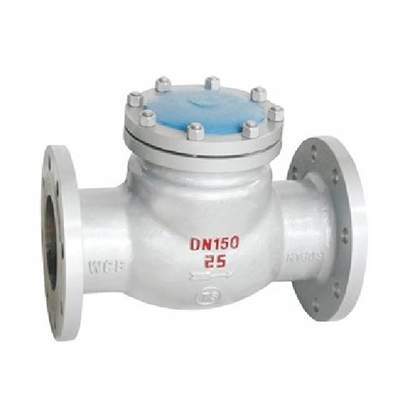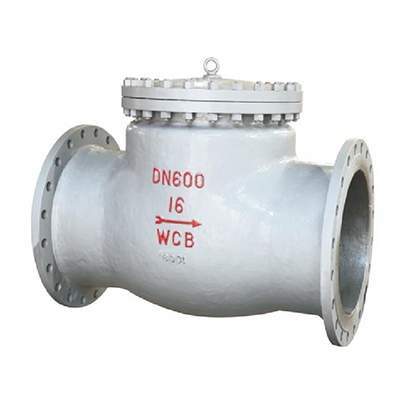Welcome to My Blog!
Before we dive into the content, if you’re interested in our products or have any questions, please feel free to visit our Contact Us page on the website. Our team is ready to assist you with inquiries, orders, or any support you may need.
Now, let’s get started on our journey together. I hope you find the content here insightful, engaging, and valuable.
Introduction

A stainless steel check valve is a vital component in fluid handling systems, designed to prevent backflow and ensure unidirectional flow. These valves are widely used in industries such as water treatment, chemical processing, food production, HVAC, and marine systems due to their durability, corrosion resistance, and ability to handle high pressure and temperature conditions.
Stainless steel check valves work by allowing fluid to flow in one direction and automatically closing when the flow reverses. This simple yet effective mechanism protects pumps, pipelines, and other system components from damage caused by reverse flow.
Choosing stainless steel over other materials offers significant advantages. Stainless steel is resistant to corrosion, high temperatures, and chemical damage, making it suitable for harsh environments where bronze or plastic valves might fail. Common applications include water systems, chemical pipelines, food processing lines, and high-pressure industrial setups.
Types of Stainless Steel Check Valves
There are several types of stainless steel check valves, each designed for specific applications:
- Swing Check Valve vs Lift Check Valve: Swing check valves use a swinging disc to block reverse flow, while lift check valves use a vertically moving disc that lifts off the seat when fluid flows. Swing valves are suitable for low-pressure systems, whereas lift valves handle higher pressures and vertical installations.
- High-Pressure Stainless Steel Check Valves: Designed to withstand extreme pressure conditions, these valves are ideal for oil, gas, and industrial pipelines.
- Food-Grade Stainless Steel Check Valves: Made from hygienic stainless steel grades, these valves meet food safety standards and prevent contamination.
- Specialty Valves for HVAC, Chemical, and Marine Applications: These valves are engineered for specific industry requirements, including resistance to corrosion, high temperature, and aggressive chemicals.
How to Choose the Right Stainless Steel Check Valve
Selecting the correct stainless steel check valve requires consideration of several factors:
- Size and Pressure Rating: Ensure the valve diameter and pressure rating match the system requirements. Oversized or undersized valves can lead to flow inefficiency or damage.
- Material Comparison: Stainless Steel vs Bronze: Stainless steel offers higher corrosion resistance and durability compared to bronze, making it suitable for aggressive environments.
- Horizontal vs Vertical Installation: Most valves can be installed horizontally, but certain lift check valves are optimized for vertical installation. Always follow manufacturer instructions.
- Industry-Specific Selection Tips: Food processing, chemical, and water systems may require specialized grades of stainless steel or specific valve designs to meet hygiene, safety, or pressure standards.
Installation Guide
Proper installation is crucial for ensuring a stainless steel check valve performs reliably:
- Step-by-Step Installation Process: Begin by shutting off the system, remove any debris, and position the valve in the correct flow direction. Use proper gaskets and tighten bolts evenly.
- Proper Orientation and Alignment: Ensure the valve is aligned with the pipeline to prevent stress on the disc and seat. Check flow direction indicators on the valve body.
- Safety Precautions: Wear protective gear and follow system shutdown protocols. Avoid pressure on the pipeline during installation.
- Tools and Accessories Needed: Common tools include wrenches, torque tools, gaskets, and pipe sealants.
Maintenance and Troubleshooting
Regular maintenance ensures long-term reliability:
- Routine Maintenance: Inspect the valve periodically for leaks, wear, and corrosion. Lubrication may be required for certain moving parts.
- Cleaning Tips: Remove deposits or debris that could prevent the valve from closing completely.
- Common Problems and Solutions: Leaks, noise, or sticking discs are typical issues. These can often be resolved by cleaning, adjusting alignment, or replacing worn parts.
- Replacement Guidelines: Replace the valve if excessive wear, corrosion, or damage affects performance.
Buying Guide and Suppliers
When purchasing a stainless steel check valve:
- Where to Buy: Online suppliers, industrial distributors, and manufacturer websites offer a wide selection of valves.
- Wholesale Options: Bulk purchases are often more cost-effective for large projects.
- Price Ranges: Prices vary depending on size, pressure rating, material grade, and industry certifications.
- Top Manufacturers and Brands: Look for certified suppliers with a reputation for quality and compliance with industry standards.
Industry Applications and Case Studies

Stainless steel check valves are used across multiple industries:
- Water Systems: Prevent backflow and protect pumps in municipal and industrial water networks.
- Chemical Pipelines: Resistant to corrosion from aggressive chemicals and high temperatures.
- Food Processing Applications: Ensure hygiene compliance and prevent contamination.
- Marine and HVAC Systems: Withstand harsh environments and maintain system efficiency.
- Case Study: In a large industrial pipeline, installing stainless steel check valves improved system reliability and reduced maintenance downtime, demonstrating their effectiveness in preventing backflow.
Conclusion
Stainless steel check valves are essential for ensuring unidirectional flow and protecting pipelines in a variety of industries. By understanding types, installation procedures, maintenance requirements, and proper selection criteria, engineers and facility managers can improve system efficiency, safety, and longevity.
Whether you are installing a new system or upgrading an existing one, choosing high-quality stainless steel check valves and following best practices ensures optimal performance and reduced maintenance costs.
FAQ
What is a stainless steel check valve?
It is a valve made from stainless steel that allows fluid to flow in one direction and prevents backflow in pipelines.
How does a stainless steel check valve work?
The valve opens automatically when fluid flows forward and closes when flow reverses, protecting pumps and pipes from damage.
What are the common types of stainless steel check valves?
The most common types are swing check valves and lift check valves, each designed for different pressure and flow conditions.
Where are stainless steel check valves commonly used?
They are widely used in water systems, chemical pipelines, food processing, HVAC, and marine applications due to their durability and corrosion resistance.
How do I maintain a stainless steel check valve?
Regular inspection, cleaning debris, checking alignment, and replacing worn parts help ensure long-term performance.
Ready to upgrade your pipeline with reliable stainless steel check valves? Contact Our Experts Today for a Free Consultation.
